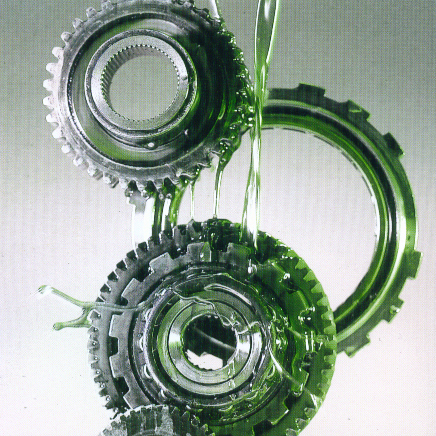

233 NE Grand Ave, Portland, OR 97232 | call: (503) 517-0871
BUSINESS HOURS| Monday-Friday 9AM-6PM PST | Saturday 9AM-5PM PST | Sunday CLOSED

Oil Change
In engines, there is inevitably some exposure of the oil to products of internal combustion, and microscopic coke particles from black soot accumulate in the oil during operation. Also the rubbing of metal engine parts inevitably produces some microscopic metallic particles from the wearing of the surfaces. Such particles could circulate in the oil and grind against the part surfaces causing wear. The oil filter removes many of the particles and sludge, but eventually the oil filter can become clogged, if used for extremely long periods. The motor oil and especially the additives also undergo thermal and mechanical degradation. For these reasons, the oil and the oil filter need to be periodically replaced. While there is a full industry surrounding regular oil changes and maintenance, an oil change is fairly simple and sometimes car owners can do themselves.
Some vehicle manufacturers may specify which SAE viscosity grade of oil should be used, but different viscosity motor oil may perform better based on the operating environment. Many manufacturers have varying requirements and have designations for motor oil they require to be used. Some quick oil change shops recommended intervals of 5,000 km (3,000 mi) or every 3 months which is not necessary according to many automobile manufacturers. This has led to a campaign by the California EPA against the 3,000 mile myth, promoting vehicle manufacturer's recommendations for oil change intervals over those of the oil change industry.
Motor oil is changed on time in service or distance vehicle has traveled. Actual operating conditions and engine hours of operation are a more precise indicator of when to change motor oil. Also important is the quality of the oil used especially when synthetics are used (synthetics are more stable than conventional oils). Some manufactures address this (IE. BMW and VW with their respective long-live standards) while others do not. The viscosity can be adjusted for the ambient temperature change, thicker for summer heat and thinner for the winter cold. Lower viscosity oils are used in many newer American market vehicles. Time-based intervals account for the short trip driver who drives fewer miles, but builds up more contaminants. It is advised by manufacturers to not exceed their time or distance driven on a motor oil change interval. Many modern cars now list somewhat higher intervals for changing of oil and filter, with the constraint of "severe" service requiring more frequent changes with less-than ideal driving; this applies to short trips of under 16 km (10 mi), where the oil does not get to full operating temperature long enough to burn off condensation, excess fuel, and other contamination that leads to "sludge", "varnish", "acids", or other deposits. Many manufacturers have engine computer calculations to estimate the oil's condition based on the factors which degrade it such as RPMs, temperatures, and trip length; and one system adds an optical sensor for determining the clarity of the oil in the engine. These systems are commonly known as Oil Life Monitors or OLMs. In the 1960s typical cars took heavy 20W-50 oil. By the early 1980s recommended viscosities had moved down to 10W-30, primarily to improve fuel efficiency. A modern typical application would be Honda Motor's use of 5W-20 viscosity oil for 12,000 km (7,500 mi) while offering increased fuel efficiency. Engine designs are evolving to allow the use of low viscosity oils without the risk of high rates of metal to metal abrasion, principally in the cam and valve mechanism areas.

